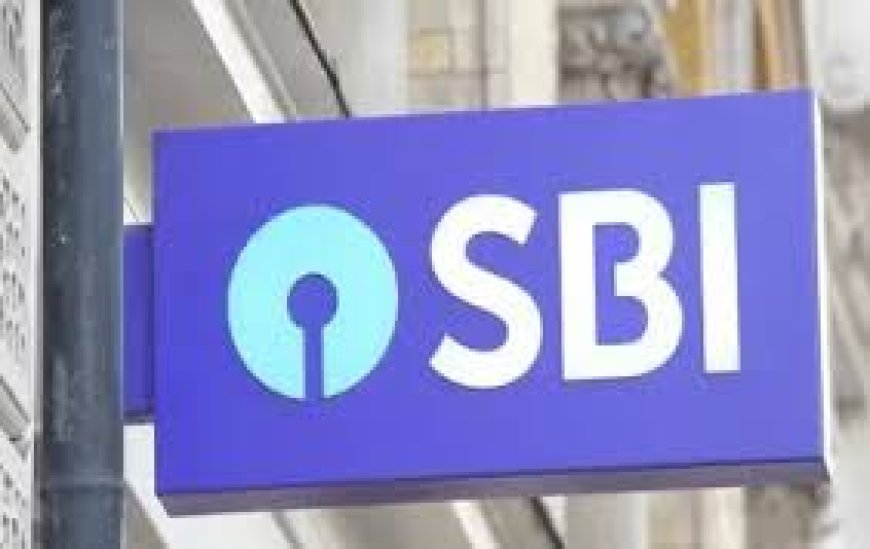SBI likely to raise Rs 5,000 crore through Tier-II bonds by August, says report
State Bank of India is reportedly planning to raise ₹5,000 crore through Tier-II bonds by August 2025 to boost its capital adequacy amid rising credit demand.

Mumbai, June 28, 2025 —
The State Bank of India (SBI), the country’s largest public sector lender, is reportedly planning to raise up to ₹5,000 crore through the issuance of Tier-II bonds by August 2025, according to a report by sources familiar with the matter. This move comes as the bank seeks to strengthen its capital adequacy ratios amid an expanding credit cycle and evolving regulatory requirements.
The capital raising is expected to take place in tranches, and the debt instruments will be structured in compliance with Basel III norms, which aim to ensure that banks maintain a sufficient cushion to absorb financial stress and promote financial stability.
Timing the Market: August Target for Issuance
SBI is likely to launch the bond offering by August, according to reports. The final decision will depend on prevailing market conditions, especially bond yields and investor appetite.
A senior executive aware of the developments told a financial daily, “The capital raising is part of a broader strategy to maintain a healthy capital buffer while supporting loan book growth. The Tier-II issuance will provide the bank with long-term funds at relatively attractive rates compared to equity.”
Instrument Details: Tier-II Bonds under Basel III
Tier-II bonds, also referred to as subordinated debt, are part of the supplementary capital of banks and serve as a critical component in meeting regulatory capital norms. These bonds are typically longer in tenure, often 10 years, and may include a call option after five years. They are subordinate to other debt, meaning in the event of liquidation, they will be repaid only after other senior debts are cleared.
The bonds issued by SBI will be in accordance with the Reserve Bank of India’s guidelines on Basel III capital regulations, which focus on improving the banking sector's ability to absorb shocks from financial and economic stress.
Market Context: Capital Demand on the Rise
India’s banking sector is witnessing a robust uptick in credit demand, driven by economic recovery, infrastructure investments, and private consumption. SBI, with over ₹35 lakh crore in total assets, has been actively expanding its retail and corporate lending portfolios.
As per its latest quarterly results (Q4FY25), SBI reported a year-on-year credit growth of 15.4%, while deposits grew by 10.2%. The capital adequacy ratio stood at 14.2%, comfortably above the regulatory requirement of 11.5%, but the bank aims to keep its buffers strong to prepare for contingencies and credit expansion.
“While the current capital position is sound, banks are now proactively raising capital to avoid crunches during volatile cycles,” said V. Suresh, banking analyst at Edelweiss Securities. “Issuing Tier-II bonds makes strategic sense, especially when growth opportunities are visible.”
Investor Sentiment: Appetite for High-Grade Bonds
Investor appetite for high-quality corporate and bank bonds remains healthy. With government bond yields softening in recent months due to hopes of a rate cut later this year, corporate bond spreads have become more attractive for institutional investors like mutual funds, insurance firms, and pension funds.
Given SBI’s AAA credit rating and sovereign backing, the Tier-II bonds are expected to receive strong subscription. These instruments offer relatively higher yields than regular fixed deposits, appealing to yield-seeking investors.
“From an investor standpoint, Tier-II bonds of PSU banks like SBI provide a safe and relatively high-yielding investment,” noted Sanjay Mathur, Head of Fixed Income Research at ICICI Securities Primary Dealership. “However, investors must account for call risk and the subordination clause.”
Regulatory Landscape: RBI and Capital Adequacy
The Reserve Bank of India has been advocating stronger capital positions among Indian banks to safeguard financial stability, particularly in the wake of global banking turbulence in 2023 and 2024. While Indian banks remained largely insulated, the regulator has encouraged periodic capital raises to ensure adequate buffers.
SBI’s move is aligned with RBI’s emphasis on Tier-II issuances for long-term capital stability. Additionally, with inflation moderating and rate normalization underway, bond issuances are likely to become more cost-effective.
Previous Capital Raising Activities
This is not SBI’s first foray into the debt market in recent years. In January 2024, the bank raised ₹4,000 crore through Tier-II bonds at a coupon rate of 7.95%, with overwhelming response from institutional buyers. The funds were deployed towards general banking purposes and credit expansion.
As per its capital plan, SBI is likely to raise both Tier-I and Tier-II capital through various instruments in the coming fiscal year, depending on regulatory permissions and market conditions.
Outlook: Strategic Capital Planning Amid Growth
SBI’s proactive capital management reflects a broader trend among Indian banks of preparing for sustained growth over the next several years. The bank’s planned ₹5,000 crore bond raise is viewed as a prudent move to maintain a solid capital buffer and leverage growth opportunities in India’s fast-recovering economy.
“With the Indian economy poised to grow at 6.7% in FY26, banks like SBI will need ample capital to meet lending demand, particularly from infrastructure and MSME segments,” said Radhika Rao, Economist at DBS Bank. “Strengthening capital via Tier-II bonds is a sound long-term strategy.”
What's Your Reaction?
 Like
0
Like
0
 Dislike
0
Dislike
0
 Love
0
Love
0
 Funny
0
Funny
0
 Angry
0
Angry
0
 Sad
0
Sad
0
 Wow
0
Wow
0












































































